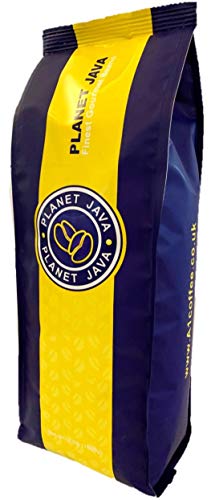Types of Coffee Beans
Behind every cup of coffee we drink there are beans that have been carefully graded. These beans are analyzed in accordance with their size and shape, color, shape and density.
The AA grade is awarded to coffee beans that meet the criteria above, with the exception that they can't contain more than 3 defects (quakers). These beans are usually Kenya AA beans.
Arabica
Arabica coffee beans are also referred to as Coffea Arabicica and are the most popular bean in the entire world. Legend has it that coffee was discovered in Ethiopia when a goat herder noticed his herd's dancing more vigorously after eating the fruits of the coffee plant. This inspired him to experiment with roasting the seeds and brewing the coffee, resulting in the drink which we enjoy today.
There are coffee bean coffee of coffee plants, however only two are used to make our most popular brews: robusta and arabica. The former is generally thought to be superior to the latter and this is evident in the taste of the finished beverage.
There are many different arabica cultivars. Each one has its own unique taste profile. Typica and Bourbon are two of the most well-known arabica cultivars. All other arabica varieties were derived from these two varieties, either through natural mutations, or through deliberate crossbreeding. Scott Labs developed the SL28 cultivar in Kenya that is renowned for its distinctive chocolate taste.
The flavor of an arabica variety depends on the conditions in which it was planted, and also the way it was handled and cooked. For instance, the kind of shade a tree gets as well as its altitude and soil composition can all play a significant role in the final result.
Robusta
Robusta coffee beans (Coffea canephora) are the second most well-known variety of coffee. They are the beans used to make most instant coffees and have twice the amount of caffeine as Arabica Coffee Beans. They are also used in many espresso blends, specifically for cappuccino and caffe latte.
Coffea Canephora is a plant that originated in Sub-Saharan Africa. It has been cultivated across the world since then. It is able to grow at lower elevations and can withstand higher temperatures than the Arabica coffee plant, which makes it a more suitable crop for farmers. Vietnam is currently the biggest producer of robusta coffee, followed by Brazil and Indonesia.
The robusta plant is a great coffee however it's not popular with cupping enthusiasts because of its bitter taste and burnt-rubber notes. Most large coffee companies use arabica beans to make their top products since it is considered a lower-quality coffee.
However the demand for premium coffee is increasing and small roasters are experimenting with premium robusta varieties to profit from its superior qualities. Our Valhalla Java coffee and Death With Coffee coffee are two examples. Both are exceptional robustas that are blended with arabica for the perfect balance between the strength and flavor. These coffees originate from Uganda which is a country in which robusta has long been cultivated. You can learn more about them here.
Liberica
Liberica coffee beans are rare varieties that are rarely used in the world. They make up less than 2% of world's coffee consumption, and are often overlooked because they don't contain the same amount of caffeine as Arabica and Robusta do. However, these beans possess distinct taste that many coffee enthusiasts find irresistible.
Liberica coffee beans, despite being extremely rare, are still quite popular in certain parts of Asia. They are particularly popular in Malaysia and Indonesia as they have large Muslim population. In these countries, the coffee industry has been robust for a long time. A cup of coffee after prayer is a part of their customs.
The background of Liberica coffee dates back to the 1890s when a global epidemic of coffee leaf rust killed the majority of the world's arabica crop. The event prompted coffee makers to search for an alternative species that could thrive in tropical climates. They quickly discovered the Liberica plant.
Liberica plants have a high tolerance to diseases and pests making them a great alternative to the devastation of the arabica crop. Liberica can also grow in lower altitudes and hot temperatures which allows it to thrive in Southeast Asia's climate. This is why, in the present, most of the coffee grown in the Philippines, Indonesia, and Malaysia is made from Liberica beans.
Excelsa
While it isn't common for coffee lovers to come across excelsa beans, they are beginning to gain an image for their unique flavor. According to Komal Sable, a fifth generation coffee farmer with South India Coffee Co., these beans are "a variation of the liberica species and have the same teardrop shape, but a smaller size." But despite the family resemblance it is important to remember that excelsa is technically not a distinct species.
It's not clear how to classify excelsa beans. This confusion is to blame for the low the presence of these beans in the contemporary coffee world. Many roasters, growers and brewers don't know how to properly cultivate and utilize these beans.
It is ultimately up to each individual to decide if he or she likes the flavor of excelsa, and it might take some time to find the right blend. The key is to be open-minded and try every type of coffee a go until you find one that you really enjoy. If you do this you'll be able to experience the full potential these unique beans have to offer. It's a journey worth the ride.

